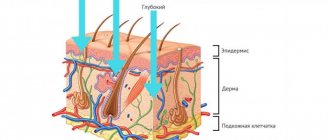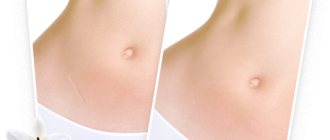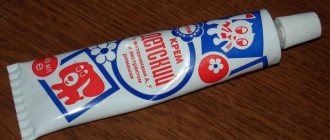Chickenpox is an infectious disease caused by the Varicella Zoster virus. The disease is highly contagious. Transmitted by airborne droplets or contact. A healthy person only needs to interact with a sick person for about 5-10 minutes to catch the virus. Chickenpox in children is most often observed at the age of 4–5 years, when the child’s body is most susceptible to infection. A child up to one year old is protected from the disease by the mother’s antibodies, which are transferred to him during pregnancy and breastfeeding. Children usually tolerate chickenpox quite easily. The incubation period lasts from 5 days to three weeks.
Symptoms of chickenpox in children
The initial manifestations of the disease resemble typical signs of a viral infection and are expressed in:
- sore throat;
- general malaise, weakness, body aches;
- capricious behavior;
- sleep disturbance;
- loss of appetite;
- headache;
- increase in body temperature. The more severe the disease, the higher the thermometer rises. With mild flow, the temperature may remain within normal values or rise slightly.
- A severe form of chickenpox is accompanied by vomiting, and the lymph nodes may become enlarged.
Simultaneously with the rise in temperature, a rash appears on the child’s body, by which chickenpox can be distinguished from other infectious diseases. Rashes with this disease are observed in the vast majority of cases. And even the mildest form is accompanied by a minimal amount of characteristic bubbles.
The rash is first noticed on the body, then on the arms, legs and head. There are no blisters on the feet and palms, but they often appear on mucous membranes: in the mouth, on the tongue and palate, on the genitals and eyes. Small red spots quickly turn into papules that resemble insect bites. Then liquid forms inside them. After the bubble is opened, a crust appears on it. The whole process is accompanied by severe itching, which causes discomfort to the child and sometimes even interferes with proper sleep. If the inflammations are not scratched, they will disappear without a trace soon. Otherwise, scratching may leave small scars on the skin.
It is important to explain to your child that you should not pick off scabs or scratch the inflamed areas, as you can introduce infection into the wounds, which will lead to complications.
The symptoms described above are typical manifestations of chickenpox. Atypical forms come in several types:
- bullous chickenpox with large purulent vesicles;
- hemorrhagic with bloody contents of vesicles;
- gangrenous-necrotic, in which the vesicles are filled with both blood and pus;
- rudimentary, which occurs without a rash and fever, only with typical signs of ARVI.
It is impossible to say for sure how many days chickenpox lasts. The first rash may appear on the first or second day of illness, the last - after a week or a week and a half. Healing of the skin will occur in one to two weeks. If there are complications, the illness may last for several weeks.
How long does chickenpox last?
How long does chickenpox last? For any organism, this question is individual, but there are limits beyond which this period does not go. Chickenpox lasts for different periods of time in both children and adults.
The entire period should be divided into stages.
The first stage is incubation. How long is the incubation period for chickenpox?
The average duration of the period is from 1 to 3 weeks.
The countdown starts from the moment of infection until the appearance of symptoms of the disease. In children they appear on average at 8-10 days, but in adults usually by the end of the third week. After this, a prodromal period begins, during which a person begins to experience headache, weakness, fever, aching joints, and lack of appetite. This is very similar to a common cold. It usually lasts a couple of days, after which the first pimples appear. Chickenpox rashes
also last differently for everyone. The average time period is from 3 to 10 days. The rashes appear immediately after the prodromal period, and are renewed every two to three days, replacing each other. During the entire period of rashes, they replace each other 3-4 times. Therefore, pimples, vesicles, papules, and crusts can usually be found on the skin. A person is especially contagious during the period of rashes, since they tend to open and thus release the infectious agent in large quantities.
It turns out that
chickenpox in children
last
on average from 10 to 14
days
.
In adults,
chickenpox often lasts
about three weeks.
How long does fever last for chickenpox in children?
This question is also individual, however, if you try, you can prevent the temperature from rising above 39 degrees for 3-5 days.
However, if a person’s immunity is weakened, or the disease is advanced, one can suffer from fever for two weeks. If a person has a fever, they should call 911 immediately. To reduce the temperature to a normal level, complex therapy is needed. Treatment should only be prescribed by a doctor. This is especially true for adults, since their disease is more severe and can cause serious complications. How long does the chickenpox quarantine last?
Doctors believe that the disease is dangerous for 4 to 13 days.
For this reason, the institution in which the outbreak of the disease was detected is closed for two weeks. How long does sick leave last for chickenpox?
If a child is sick, it is better not to go to the clinic, but to call a doctor at home, since in a medical facility the baby can infect other children. If the diagnosis is confirmed, the doctor prescribes a sick leave for one of the parents for a period of 5 to 10 days, in extreme cases up to 15 days. If an adult falls ill, the average length of his stay on sick leave is 10-14 days. However, if complications arise, the period can be extended to three weeks or more. This is explained by the fact that chickenpox is more difficult for an adult to tolerate than a child. ', '~DETAIL_TEXT' => ' Chickenpox is an infectious disease that first manifests itself with standard respiratory symptoms, and a little later with characteristic rashes on the skin and mucous membranes. This disease is considered a childhood disease, but it also happens to adults who were not infected in childhood. You can become infected from a sick person from the end of the incubation period to the end of the active phase.
Treatment of chickenpox in children
Even with a mild course of the disease, a pediatrician should monitor the child’s condition and prescribe medications. Therefore, a doctor should be called to your home at the first suspicion of chickenpox. A set of measures for this disease usually includes the following.
- A sick baby is isolated so that he does not infect others, since there are some groups of people (pregnant women, elderly people and people with chronic diseases) for whom chickenpox can be extremely dangerous.
- Strict bed rest is prescribed for severe cases of the disease or limit physical activity if the disease is mild.
- When treating chickenpox, if no complications are observed, do not use antiviral drugs and antibiotics.
- The child should be offered to drink a lot: clean water, tea, fruit drinks.
- The diet should be as light as possible: soups, steamed fish and meat, pureed fruits and vegetables (if there is a rash on the oral mucosa).
- Suitable drugs based on ibuprofen and paracetamol are used as antipyretics.
- To treat the rash, antiseptics are used: fucorcin, brilliant green, hydrogen peroxide, potassium permanganate, zinc-based products.
- If the itching is severe, your doctor may prescribe antihistamines.
- If a rash forms in the mouth, the pediatrician will recommend rinsing with furatsilin and herbal decoctions. Painful wounds can be lubricated with anesthetic gels.
- If there are scars left after chickenpox, they are lubricated with special products prescribed by the doctor.
On what day is the certificate issued?
The certificate is issued after the child has recovered. Only a doctor can accurately determine the length of time a patient will stay at home. On average, a child is discharged 17-18 days after the onset of the disease.
Children with chickenpox rarely stay at home for more than 21 days. Doctors do not recommend staying isolated from other children any less. If complications develop, parents may have their sick leave extended for a longer period of time.
Children's quarantine due to chickenpox
Chickenpox is a disease that can spread rapidly in an ordinary room. Neither tightly closed doors nor flights of stairs will stop her. Literally within a day, the infection can affect all children who attend a children's educational institution. Although chickenpox is not fatal and most often does not cause irreparable harm to the health of children, it is not worth the risk. It is necessary to contact the parents immediately after diagnosis and isolate the sick child.
Mom and dad are obliged to carefully care for a sick baby and follow all the pediatrician’s instructions. Boys or girls who still have fresh rashes should not be taken to kindergarten after chickenpox. The incubation period is 10-12 days after the last rash appears. These days should be spent at home; you should not try to visit public places. As an exception, you can visit relatives if they have immunity to chickenpox.
Doctors allow children to return to the garden after chickenpox only after complete recovery. It is not only dangerous, but also irresponsible to discharge early.
Chickenpox does not go away quickly. Most often, the baby is sick for quite a long time - at least 3 weeks. In preschool educational institutions, a quarantine is usually declared for at least 21 days if several children get sick.
What certificates should I take and from whom?
If your baby had chickenpox, how many days you need to be at home, you knew and successfully defeated the disease, but were faced with a documentary type of trouble, it will be interesting to know that parents are issued a sick leave for chickenpox in children for 10 days. Sometimes this time is not enough to completely cope with the baby’s illness and there are two ways out of the situation. The doctor can send the parent to work, and leave the child in the care of other relatives, or the parent extends the sick leave for another 4 days. This is permitted by the laws of the country.
As for when to visit the kindergarten after chickenpox, parents should bring the baby for examination to a regional therapist in a children's clinic. After examining the skin, the doctor can issue a certificate that the child is completely healthy and can attend a child care facility. In most cases, such a certificate is issued five days after new blisters on the skin have completely stopped appearing.
Despite the fact that the forced holidays for the child and parent last more than three weeks, there are unpleasant symptoms and hassle, it is better for your child to get sick before the age of 10 years. If this does not happen, be sure to get vaccinated. Forced interruption at home will seem like a trifle to you, in comparison with the serious complications after chickenpox, which affect vital organs if an adult child is sick.
We recommend the popular Zen channel “https://zen.yandex.ru/build-experts.ru”, where you will find a lot of useful information for summer residents and gardeners.
Methods of spreading chickenpox
Children come into very close contact with each other, play with the same toys, and even bite each other, so contracting chickenpox will not be particularly difficult.
The route of transmission of the disease is airborne droplets. And accordingly, you can become infected with it through basic contact with a sick person, as well as by inhaling already contaminated air. You can also catch chickenpox after using the patient’s clothes or hygiene items, but this route of infection is very rare, since viral agents are very unstable in the environment.
The causative agent of this pathology is the third generation herpes virus, which can also cause herpes zoster. Therefore, a person with shingles is a potential carrier of chickenpox. It is best for such patients to stay at home for a while to avoid further spread of the disease.










